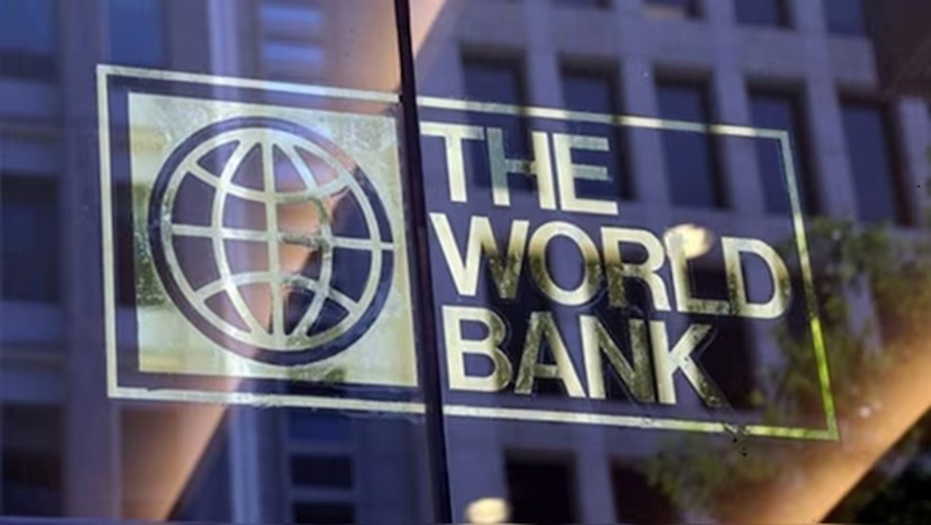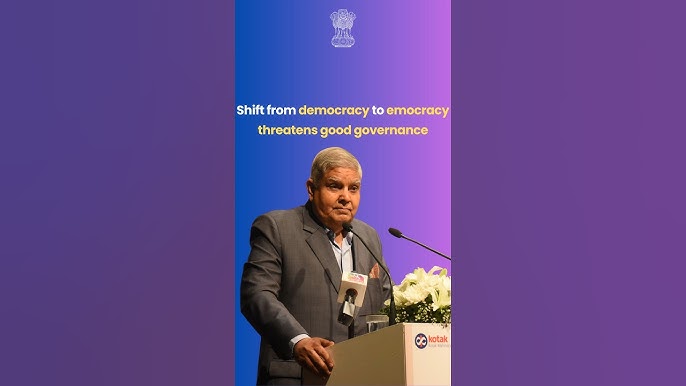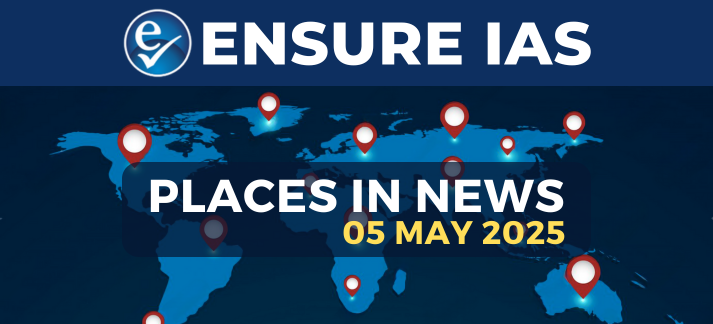- Courses
- GS Full Course 1 Year
- GS Full Course 2 Year
- GS Full Course 3 Year
- GS Full Course Till Selection
- Online Program
- GS Recorded Course
- NCERT (Recorded 500+ Hours)
- Polity Recorded Course
- Geography Recorded Course
- Economy Recorded Course
- AMAC Recorded Course
- Modern India, Post Independence & World History
- Environment Recoded Course
- Governance Recoded Course
- Science & Tech. Recoded Course
- International Relations and Internal Security Recorded Course
- Disaster Management Module Course
- Ethics Recoded Course
- Essay Recoded Course
- Current Affairs Recoded Course
- CSAT
- 5 LAYERED ARJUNA Mentorship
- Public Administration Optional
- ABOUT US
- OUR TOPPERS
- TEST SERIES
- FREE STUDY MATERIAL
- VIDEOS
- CONTACT US
World Development Report 2024
World Development Report 2024
07-08-2024

The World Bank's recent report, "World Development Report 2024: The Middle Income Trap," highlights significant challenges for over 100 countries, including India, in achieving high-income status in the coming decades.
Key Highlights of the World Development Report 2024
- Middle Income Trap:
- Countries at Risk: India and China are among 100 countries at risk of falling into the middle-income trap.
- India's Challenges:
- Benefits from favorable demographics and digitalization.
- Faces a tougher external environment.
- Aims to become a developed nation by 2047, requiring a comprehensive approach to enhance overall economic performance.
- Transition Success: Only 34 middle-income economies have transitioned to high-income status since 1990, often due to special circumstances.
- Diminishing Returns: Middle-income countries struggle with sustaining economic growth due to diminishing returns on physical capital.
- Productivity Issues: Despite high capital endowments, productivity remains a challenge.
- Outdated Strategies: Many countries rely on outdated economic strategies focused mainly on expanding investment.
Global Economic Impact:
- Population and GDP: Middle-income countries house 75% of the global population and generate over 40% of global GDP.
- Impact on Prosperity: Their success or failure in achieving high-income status will significantly impact global economic prosperity.
- Per Capita Income Disparity:
- India's Growth: India is the fastest-growing major economy but would take 75 years to reach a quarter of US income levels if current trends continue.
- Comparison with Other Countries: China would take over 10 years, Indonesia nearly 70 years, and India 75 years.
Challenges and Risks:
- Obstacles: Aging populations, rising debt, geopolitical and trade frictions, and environmental concerns.
- Risk of Stagnation: These countries risk not achieving prosperous societies by mid-century if current trends continue.
Strategic Recommendations:
- 3i Strategy: A three-phase approach for countries to reach high-income status:
- Investment for low-income countries.
- Investment and Infusion of foreign technologies for lower-middle-income countries.
- Investment, Infusion, and Innovation for upper-middle-income countries.
- Example: South Korea transitioned from USD 1,200 to USD 33,000 per capita income by adopting the 3i strategy.
- Policy Recommendations:
- Comprehensive Approach: India needs a comprehensive approach to enhance overall economic performance.
- Horizontal Policies: Focus on horizontal policies rather than vertical debates.
- Education and Skills: Emphasize improving education and skills to absorb technology and innovation.
- University-Industry Connections: Strengthen connections between universities and industries.
- Technology Preparedness: India shows potential in digitalization but needs greater dynamism in firms to utilize technologies effectively.
- Microenterprises: The prevalence of microenterprises suggests barriers for productive firms to grow.
What is the MiddleIncome Trap?
|
Current Status:
- Classification: By the end of 2023, 108 countries were classified as middle-income, with GDP per capita between USD 1,136 and USD 13,845.
- Population and GDP: These countries house 75% of the global population and generate over 40% of global GDP, contributing to more than 60% of carbon emissions.
- India's Status: India transitioned from a low-income nation to a lower-middle income group in 2007 and has remained in that classification since then.
Challenges for India to Improve Income Status
- Income Inequality:
- Gini Index: India continues to grapple with high levels of consumption inequality, with a Gini index of around 35 over the past two decades.
- Poverty Reduction: Although India made significant strides in reducing extreme poverty between 2011 and 2019, the pace of poverty reduction has slowed, especially post the Covid-19 pandemic.
- Balancing Growth and Inflation:
- Monetary Policy: Higher interest rates aimed at controlling inflation can temper demand and impact economic growth.
- Fiscal Management: Strategic fiscal management is crucial to support growth without exacerbating inflation.
- Income Per Capita:
- Upper-Middle-Income Threshold: India’s per-capita income is significantly below the upper-middle-income threshold of USD 4,256.
- Growth Targets: Achieving high-income status will require substantial growth in per-capita income over the coming years.
- Labor Force Participation:
- Job Quality: Despite improvements in employment indicators, concerns remain about the quality of jobs, real wage growth, and the low participation of women in the labor force.
- Job Creation: The Economic Survey 2023-24 notes that India needs to generate an average of nearly 78.5 lakh non-farm jobs annually until 2030 to cater to the rising workforce.
- Economic Diversification:
- Key Sectors: While mining, manufacturing, construction, and services are key growth drivers, India must ensure continued diversification to avoid over-reliance on any single sector.
- Manufacturing Targets: India aims for the manufacturing sector to contribute beyond 20% of GDP by FY31.
- Environmental and Climate Resilience:
- Net-Zero Emissions: India’s aspiration to achieve high-income status by 2047 must align with its goal of net-zero emissions by 2070.
- Green Technologies: Balancing economic growth with climate resilience is a complex challenge, requiring significant investments in green technologies and sustainable practices.
Factors Supporting India's Improvement in Income Status
- Global Offshoring:
- Outsourcing: Increased outsourcing of services such as software development, customer service, and business process outsourcing to India.
- Employment Growth: Acceptance of work-from-home and work-from-India models, potentially doubling employment in outsourced jobs to over 11 million by 2030 as global spending on outsourcing is expected to grow from USD 180 billion annually to around USD 500 billion by 2030.
- Digitalization:
- Aadhaar and IndiaStack: India's Aadhaar program and IndiaStack (Digital Public Infrastructure) are driving a digital transformation, enabling greater financial inclusion and credit access.
- Credit-to-GDP Ratio: India's credit-to-GDP ratio could rise from 57% to 100% in the next decade, and consumer spending is expected to more than double from USD 2 trillion to USD 4.9 trillion, with the greatest gains in non-grocery retail.
- Energy Transition:
- Renewables: Significant investment in renewables such as biogas, ethanol, Green hydrogen, wind, solar, and hydroelectric power.
- Energy Consumption: Daily energy consumption is expected to increase by 60%, reducing reliance on imported energy and improving living conditions.
- Manufacturing Sector:
- Corporate Tax Cuts: Corporate tax cuts, investment incentives, and infrastructure spending are driving capital investments.
- GDP Share: Manufacturing's share of GDP is projected to increase from 15.6% to 21% by 2031, potentially doubling India's export market share.
- Services Sector:
- Growth Projections: Services sector is expected to grow at 6.9% between fiscals 2025 and 2031. Services will continue to be the dominant driver of India's growth.
- Economic Size:
- GDP Doubling: Potential doubling of GDP from USD 3.5 trillion to over USD 7 trillion by 2031.
- Stock Exchange Growth: Bombay Stock Exchange expected to grow at 11% annually, reaching a market capitalization of USD 10 trillion by 2030.
- Consumption and Income Distribution:
- Rising Income Levels: Rising income levels can lead to a significant increase in overall consumption.
- Consumer Spending: Increased per capita income and economic growth will boost domestic consumption. Consumer Spending is expected to more than double from USD 2 trillion in 2022 to USD 4.9 trillion by the end of the decade, with notable gains in non-grocery retail, leisure, and household goods.
Strategies for India to Avoid the Middle-Income Trap
- Address Income Inequality:
- Equitable Distribution: Implement policies to ensure a more equitable distribution of wealth.
- Progressive Taxation: Increased social spending, and targeted subsidies for the lower-income segments.
- Enhance Economic Diversification:
- Emerging Industries: Focus on diversifying the economy beyond traditional sectors. Invest in emerging industries such as technology, renewable energy, and advanced manufacturing.
- Regional Development: Encourage development in economically lagging regions to prevent over-reliance on certain areas and spread economic benefits more evenly.
- Increase Productivity and Innovation:
- Research and Development: Foster innovation through investments in research and development, and support tech-driven industries to enhance productivity.
- Education and Skills: Focus on improving education and skills to meet the demands of a modern economy. Emphasize vocational training and higher education.
- Support Local Manufacturing and Production:
- PLI Schemes: Encourage local manufacturing through policies such as the PLI schemes.
- Regional Manufacturing: Tap into local skills and resources by promoting manufacturing in states with potential but lower costs.
- Foster Inclusive Growth:
- Essential Goods: Ensure that the production and distribution of essential goods like food, healthcare, and education are prioritized, making them affordable for all segments of the population.
- Job Creation: Implement policies that create job opportunities and improve living standards across different regions and communities.
- Strengthen Economic Institutions and Governance:
- Efficiency and Transparency: Improve the efficiency and transparency of economic institutions to reduce corruption and ensure that resources are used effectively.
- Structural Reforms: Undertake structural reforms to streamline regulations, ease the business environment, and attract investment.
- Focus on Sustainable Development:
- Environmental Sustainability: Align economic growth strategies with environmental sustainability goals. Invest in green technologies and ensure that development does not compromise environmental health.
- Climate Resilience: Develop strategies to mitigate the impacts of climate change and build resilience in vulnerable sectors.
- Promote Financial Inclusion:
- Access to Credit: Enhance financial inclusion by improving access to credit and financial services for small businesses and individuals in underserved areas.
- Digital Platforms: Leverage digital platforms to increase financial inclusion and improve the efficiency of financial transactions.
About World Bank:
- Establishment:
- Creation: The World Bank, created in 1944, was established at the United Nations Monetary and Financial Conference in Bretton Woods, New Hampshire in 1944 as the International Bank for Reconstruction and Development (IBRD), along with the International Monetary Fund (IMF).
- Evolution: The IBRD later became the World Bank.
- Mission:
- Objective: The World Bank Group is a global partnership of five institutions working for sustainable solutions to reduce poverty and build shared prosperity in developing countries.
- Member Countries: The World Bank is one of the United Nations' specialized agencies and has 189 member countries, including India.
- Institutions:
- IBRD: International Bank for Reconstruction and Development
- IDA: International Development Association
- IFC: International Finance Corporation
- MIGA: Multilateral Guarantee Agency
- ICSID: International Centre for the Settlement of Investment Disputes
- India's Membership:
- Founding Member: India is one of the founding members of IBRD, IDA, and IFC.
- Funding: India is not a member of ICSID but has been accessing funds from the World Bank (mainly through IBRD and IDA) for various development projects.
- Major Reports:
- Ease of Doing Business (Stopped publishing)
- Human Capital Index
- World Development Report
- Global Economic Prospect (GEP) Report
Must Check: Best IAS Coaching In Delhi
UPSC Prelims Result 2024 Out: Expected Cut Off & Other Details, UPSC Prelims 2024 Answer with Explanation, Daily Prelims Quiz, Daily Current Affairs, MONTHLY CURRENT AFFAIRS TOTAL (CAT) MAGAZINE, Best IAS Coaching Institute in Karol Bagh, Best IAS Coaching Institute in Delhi, Daily Mains Question Answer Practice, ENSURE IAS UPSC Toppers, UPSC Toppers Marksheet, Previous Year Interview Questions, UPSC Syllabus




